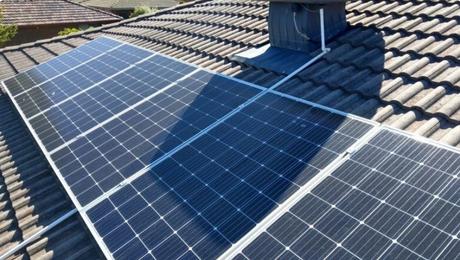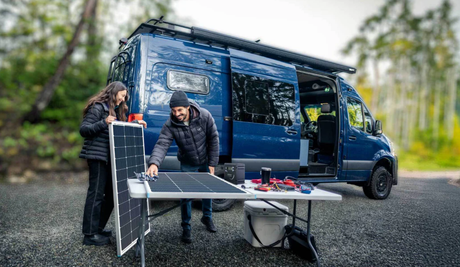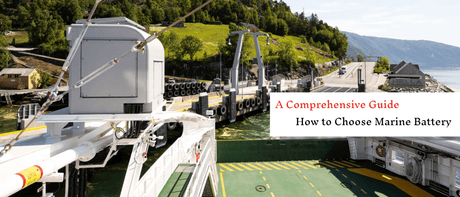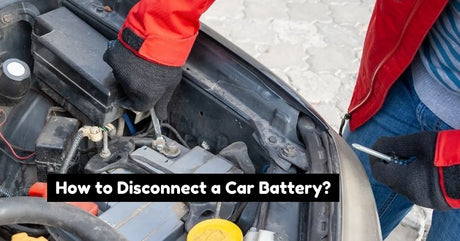How to safely install your solar installation
Designing, shopping, and installing a solar system for your home can be a very fun and inspiring process. However, it’s important to not let yourself get caught up in the excitement and forget about one of the most crucial parts of the installation process: staying safe. There are a few important considerations to keep in mind while you’re installing your solar panels to keep you and your home safe. Here’s what you can do to ensure an efficient and safe installation.
What does the installation process look like?
If you’re installing a solar panel kit, there are some general steps you’ll want to follow.
1.Use the Renogy solar panel calculator to size your system
Calculating your energy needs to determine what size solar system you should install is the first thing to do once you decide on going solar. The Renogy solar panel calculator helps you easily determine those needs by asking for information about your lifestyle and the appliances you want to run in your home. It will then tell you the minimum and recommended system sizes to meet those needs,
2. Shop for a DIY solar panel kit
Renogy solar panel kits. make it easy to piece your system together. Kits include solar panels, charge controllers, cables, and mounting hardware, meaning you still need to buy an inverter and batteries. Kits will include detailed instructions for how to install the equipment, but if you still have questions, we recommend you reach out to a professional for help.
3. Select Your Batteries
If you’re going off-grid or want to have energy storage in your system, you’ll need to research to decide what battery is best for you. Lead acid batteries are the most inexpensive option and are available at most big-box and auto stores. Absorbed glass matt batteries store 10 to 15 percent more energy than lead acid batteries and charge up to four times faster. Lithium ion batteries are the most expensive options, but also last four times longer than lead-acid batteries and weigh much less. They also require very limited maintenance.
4. Permitting and Installation
If you’re installing panels on a cottage, cabin, or home, do your research to see what building codes say and what permitting is required. Every jurisdiction is different. Check with your state energy office, local officials, or a local renewable energy organization to see what requirements exist to make sure you adhere to specific rules, regulations and building codes. Once all your necessary paperwork is in place (if applicable to you), then it’s time for the actual installation. Renogy’s DIY kits include specifications about how to install the technology, but it never hurts to consult with a professional to ensure the job is done right.
Do I need to hire a contractor?
If you’re installing panels on your home, you’ll want to do your research to see what local building codes say and what permitting is required. Every jurisdiction is different. Check with your state energy office, local officials, or a local renewable energy organization.
Also, it’s important to note that if you’re staying on-grid, many jurisdictions require that your installation is completed by a licensed contractor. It’s typically much easier to go the DIY route if you’re installing an off-grid system.
What safety measures should I follow when installing my panels?
There are some key rules of thumb when it comes to ensuring a safe solar installation process.
- Check for damage to your equipment: Our team at Renogy takes great care in carefully shipping and packaging your shipment, but sometimes equipment can get damaged in transit. Damaged components and wiring can lead to lower performing equipment, and could even potentially cause fires or other issues. When you receive a shipment, always visibly check all of your equipment and double check connection points once pieces have been installed.
- Do not work alone: Use the buddy system while you’re installing your panels. Not only is a second pair of hands and eyes useful when handling large solar panels, it’s important in case of emergency.
- Only install panels when it’s dry out: Roofs can get slippery very quickly when it starts to rain.Working on panels in the rain can present challenges to physically mounting the equipment, as well as maneuvering yourself around the work area. It’s always best to wait until the weather is dry.
- If mounting on a roof, secure yourself with a roof anchor tool: Protecting yourself from a potential fall is very important. Always use a roof anchor tool when installing panels to a roof. Anchors can be installed temporarily while you install panels, or you might want to permanently install them to make it easy to safely access your panels in the future.
- Insulate yourself to protect yourself from electric shock: Direct current can give you a series shock if you don’t know what you’re doing. Adhere to all codes, regulations, and manufacturer’s guidelines when installing solar panels. We also recommend using insulated tools and rubber gloves and avoiding wearing any conductive items, such as jewelry and watches.
- When in doubt, consult an expert: Last, but not least, if you’re uncomfortable or unsure about anything involved in the installation process, we recommend talking with or hiring an expert to help you safely complete the job.
Can solar panels be damaged by a short circuit?
This is a very common concern. Typically fuses and circuit breakers will prevent any potential fires or damage. They’re also there to protect your components from becoming damaged if there is a short circuit. For example, if a short develops in your solar inverter, a fuse between it and the battery will prevent an explosion of the battery and it will cut the circuit fast enough to prevent the wires from catching fire or getting dangerously hot. In this case, the battery, wires, and AC/DC inverter will be safely disabled by the fuse.
When do I need fuses?
When you connect panels in series, there will be no increase in current flow so fusing is not required for this string. When your panels are connected in parallel, the current is additive. So if you have 4 panels each capable of up to 15 amps, then a short in one panel can draw all 60 amps towards that single short-circuited panel. This will cause the wires leading to that panel to far exceed 30 amps causing that wire-pair to potentially catch fire. In the case of panels in parallel, a 30-amp fuse is required for each panel.
Conclusion
There’s never been a better time to go the DIY route when installing a solar system thanks to the growing availability of easy-to-install solar panel kits. With that in mind, there are still some essential things you can do to keep you and your system safe during the process, such as wearing insulated boots and paying attention to the specifications and installation instructions for all your equipment. By heeding all this advice, you should be well on your way to safely and easily installing your system.










